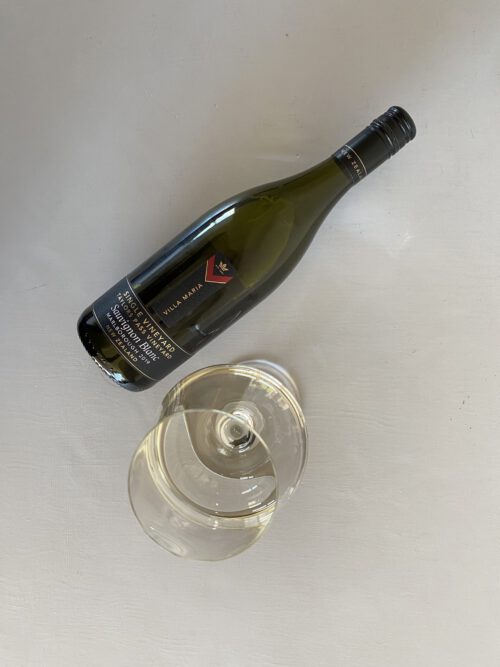Marlborough region New Zealand
While in France they are fighting the morning frost, New Zealand has just successfully rounded up its 2021 harvest. New Zealand is a relatively young wine country, yet world-famous for its crisp, fruit-driven Sauvignon Blanc. Lets explore this popular grape in its natural habitat: the Marlborough region in New-Zealand, see how the grape is grown and why it has distinct flavors only New Zealand can provide.
Sauvignon Blanc from New-Zealand has a reputation of being fun, light and easy to drink, but as we seen its popularity grow worldwide, we also see a great evolvement in the wine styles and the regions it is grown in. Mind you, that New Zealand wine is only 200 years old and is still very much evolving. As a wine country, New Zealand is responsible for about 1% of the wine export worldwide. It is a small country with a cold maritime climate. Why it is still possible to grow grapes there? This is because New Zealand is located under a depleting ozone layer, providing the wine regions with lots of UV radiation (40% more than in Loire for example). This makes it possible for the grapes to ripen well during the day. At night the temperature drops radically, what slows down the ripening process, preserving the freshness and the juiciness of the grapes.
Most of the places in New Zealand are too cold to grow grapes, even with the strong UV radiation; Sheltered by high country to the west, south and parts of the east, and open to the Cook Strait in the north, Marlborough experiences bright, chilly winter months followed by long, dry summers. An extensive glacial braided river system has deposited deep, free-draining soils across the various sub-regions, creating the perfect environment to successfully grow a wide range of grape varieties.
Marlborough is New Zealand’s sunniest region. The summer daytime air temperatures range from 20°C to 26°C, with winter daytime air temperatures ranging from 10°C to 15°C. The region’s average annual rainfall is 655 mm. In Marlborough we can distinguish three different regions: Wairau Valley, Southern Valleys and Awatere Valley. The two most important regions we will focus on are: the Wairau and Awatere Valley.
The Wairau Valley is located in the west and the Awatere Valley is located south, where it is under the strong influence of the cold Antarctic winds. The Wairau Valley is called by the Maori ‘place with the hole in the clouds’. The Richmond rage is keeping clouds at bay, which keeps the Wairau Valley region warm, dry and sunny. Here you will find the typical tropical and stone fruit aromas of Sauvignon Blanc: peach, passionfruit and pink grapefruit.
The Awatere Valley is not only much colder, most of the land is divided by many riverbeds, creating small plots of land with different soil profiles. This gives the grapes from this region green and herbal aroma’s of: tomato leaf, asparagus, pea’s, gooseberry and lime. The stones, pebbles and ancient clay pushed out by the rivers, give the wine a long and mineral (slightly salty) finish.
Today’s Wine: Sauvignon Blanc – Villa Maria Single Vineyard Taylors Pass 2019
For this article we reviewed the 2019 vintage of “Taylors Pass Sauvignon Blanc” by Villa Maria. The grapes from this wine are grown in the Awatere region and it is not your typical Sauvignon Blanc. It is exciting to see how this wine is different from the usual New Zealand Sauvignon Blanc. Villa Maria is the biggest family owned business in New Zealand. The founder of the company, Sir George Fistonich, has founded the company 60 years ago and has been a true pioneer in the New Zealand wine industry ever since. In 2009 he was knighted for his contribution to the New Zealand wine industry.
Taylors Pass Vineyard is located on the northern bank of the Awatere River in southern Marlborough. The average vine age around 15 years-old. Sheltered from prevailing cool easterly winds, each terrace of the vineyard has varying soil types, stony gravels are nearest the river, whereas the mid-terrace has silt over gravels and the highest terrace is a deeper silt over clay-papa base. This patchwork of soil types provides the vineyard with dramatically variable ripening patterns, therefore producing a “fruit salad” of pungent Sauvignon Blanc flavours to select from.
The wine is fermented on stainless steel to preserve the aroma’s and retain the terroir specifics. With its clear golden color, it has a nose that is very aromatic, driven by exciting fruity notes like black current, but also some vegetable references and herbs like coriander. On the palette you experience freshness like a spring creek, with minerality and wet stone, but also crispness and a kick from notes of lemon grass, lime zest and flint. Driven by the great difference in day and night temperatures this cool wine has perfect acidity and is able to keep the fruitiness alive without becoming predictive. Excellent texture and just enough body. A wine with diversity, that derives from the different soil types in this vineyard, a fine example of what New Zealand and Marlborough have to offer.
Vintage the Movie
To learn more about New Zealand and winemaking we recommend you to watch the great documentary “Vintage” that was released recently. This documentary follows last years harvest and gives great insights besides being very entertaining. You can watch it via the link below.
This article has been written in cooperation with New Zealand expert Inna Udartzeva. If you want to learn more about New Zealand, and the Marlborough region, be sure to tune in for episode 5 of this season of Cellar Talks. On the 30th of April we will discuss the country, region and some of its wines with Inna.

